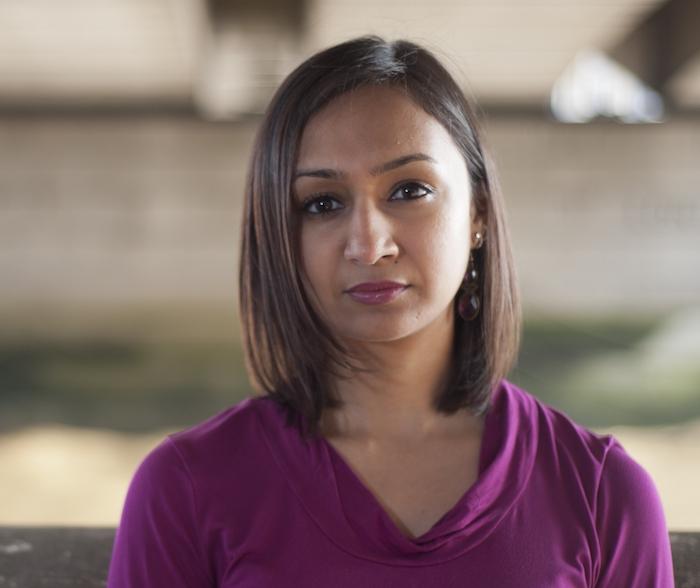"I've been known to stroke concrete," writes self-professed geek Roma Agrawal – and from the very beginning of her memoir-cum-introduction to structural engineering, Built, where she describes her awe as a toddler at the glass and steel canyon of Manhattan, the structural is personal.
The book is divided by materials, elements and concepts – “Sky”, “Clean”, “Rock”, “Force”, and “Clay” are all chapter titles – and each hones in on a particular structure by weaving together the stories of the people who built them, the social and historical context in which they were conceived and built, and the preceding advances in engineering which made each project possible. A chapter which opens by laying out the Japanese social structures which made the trade in human faeces for agricultural purposes so lucrative during the Tokugawa shogunate (1603 - 1868), turns into a sustained examination of the development of London’s sewer system and how the new "super sewer" will affect the ecology of Thames.
Agrawal tells the stories behind well-known feats of engineering such as Brunelleschi's dome in Florence, the Thames Tunnel, and the Brooklyn Bridge. There’s a rich narrative seam here of the trials met by their engineers: how Brunelleschi, when challenged on how he would construct the dome, crushed an upright egg and refused to say more; how Emily Warren Roebling managed the construction of the Brooklyn Bridge when her husband Washington Roebling fell ill, all the while deflecting rumours that she was the force behind the bridge; how Marc Brunel and his son Isambard Kingdom Brunel kept the Thames Tunnel going through floods, fiascos and illness. She also brings to attention lesser-known marvels such as Iranian muqanni (quanat in Arabic) which, through channelling fresh water have sustained for close to three thousand years human civilisation in some of the most arid regions on earth.
 She writes with an engineer’s computational precision, balanced with charming approximation: how better to explain strength differentials to laypeople than with elephants? If five elephants can stand on a single brick and not break it, eighty elephants can stand on a concrete brick before it crumbles. She makes complex concepts clear, and the strength of her analogies resides in their accessibility. Take, for instance, her explanation of how a lattice functions: Maltesers roll easily beneath your palm, but by intermixing raisins they move less freely; substitute Maltesers with iron atoms and carbon atoms for the raisins and it’s easy to understand why steel is stronger than iron. Deceptively simple sketches punctuate the book and lead easily to larger points – one which shows the direction of lines of force on load-bearing structures and frame structures becomes the starting point for an exploration into the innovations that have allowed buildings to shoot up in height since the 1880s. It’s just one way in which she brings hidden histories into view.
She writes with an engineer’s computational precision, balanced with charming approximation: how better to explain strength differentials to laypeople than with elephants? If five elephants can stand on a single brick and not break it, eighty elephants can stand on a concrete brick before it crumbles. She makes complex concepts clear, and the strength of her analogies resides in their accessibility. Take, for instance, her explanation of how a lattice functions: Maltesers roll easily beneath your palm, but by intermixing raisins they move less freely; substitute Maltesers with iron atoms and carbon atoms for the raisins and it’s easy to understand why steel is stronger than iron. Deceptively simple sketches punctuate the book and lead easily to larger points – one which shows the direction of lines of force on load-bearing structures and frame structures becomes the starting point for an exploration into the innovations that have allowed buildings to shoot up in height since the 1880s. It’s just one way in which she brings hidden histories into view.
Another aspect of these hidden histories is the women behind these constructions; Agrawal clearly feels lucky to be a female engineer working now. "Working in a man's world can be challenging in all sorts of ways, sometimes comical, at other times trying,” she writes, but her astonishment at actually standing on constructions she spent months designing on a screen is infectious, and she’s not in the position of the “Brunel in petticoats” (Sophie) – who showed more promise than her brother, Isambard, but was barred the profession because of her sex (“the great engineer we never had”).
Overall, what is important to Agrawal is that the awesome power of engineering is appreciated – “It thrills me to see tourists taking pictures of buildings in a city because it means they love engineering – even if they don’t know it.” Anyone who can be wooed with a series of emails titled “Bridge of the Day” is doubtless in love with their profession and clearly deserves the moniker "geek".
- Built: The Hidden Stories Behind Our Structures by Roma Agrawal (Bloomsbury, £20 hardback)
- Read more book reviews on theartsdesk















Add comment